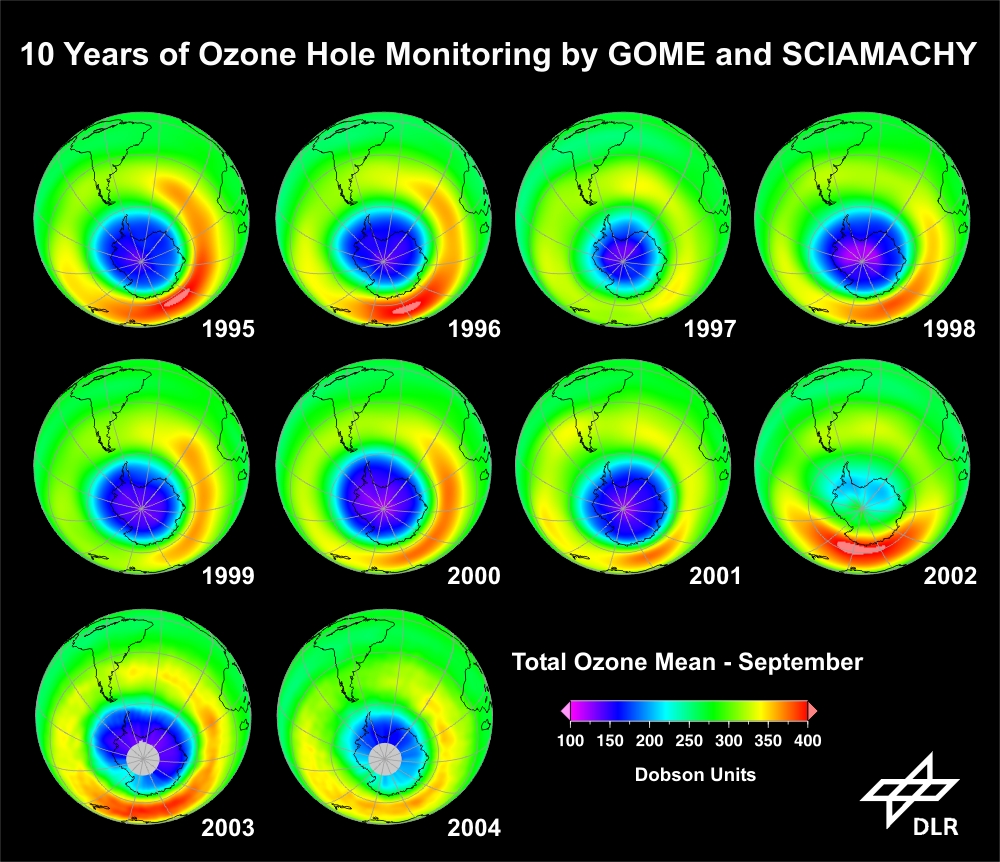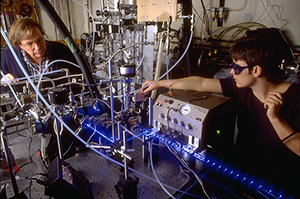The following is a September 10, 2014 news article on the NOAA Research site with the title above and subtitled “NOAA helps lead latest analysis of Earth’s protective shield”:
Nearly 30 years after the protections of the Montreal Protocol were put into place, there’s more evidence that the international agreement to protect Earth’s ozone layer is working, according to a new scientific report released today at the United Nations headquarters in New York. The abundances of most ozone-depleting substances in the atmosphere have dropped since the last assessment, in 2010, and Earth’s protective ozone layer may be showing some signs of recovery, according to the “Assessment for Decision-Makers,” part of a larger report to be released early next year.
“There are telltale signs of ozone recovery in the upper part of the stratosphere,” says A.R. Ravishankara, who is a NOAA emeritus scientist, professor at Colorado State University, and a co-chair of the panel that prepared the new report. The new report also emphasizes the complex connections between ozone layer recovery and climate change, he said. For example, some of the replacements for ozone-depleting substances are safe for the ozone layer but cause climate warming.
The report is the latest in a series produced every four years by the international scientific community, led by the World Meteorological Organization (WMO) and the United Nations Environment Programme (UNEP), and co-sponsored by NOAA, the National Aeronautics and Space Administration (NASA) and the European Commission. Decision-makers rely on these scientific updates and have used them to strengthen protection of the ozone layer, banning or restricting the use of ozone-depleting substances, for example.
Most ozone is found in the stratosphere, miles above the Earth. The ozone layer acts as a shield, absorbing ultraviolet (UV) radiation from the Sun and protecting the Earth’s surface from harmful amounts of UV. In the 1970s, NOAA scientists and colleagues around the globe began to understand that some chemicals, including chemicals called chlorofluorocarbons (CFCs) and halons, used widely in cooling and firefighting, could reach the stratosphere and trigger reactions that destroy ozone. When researchers discovered in 1985 that a seasonal “ozone hole” was forming in the Antarctic spring, NOAA scientists played a leading role in showing that those same chemicals were causing the hole.
Because of the Montreal Protocol, many ozone-harming chemicals have been replaced by substances that don’t destroy ozone. However, some of the new chemicals, including the CFC-substitute hydrofluorocarbons (HFCs), are potent greenhouse gases and could contribute substantially to climate change in the coming decades. Scientists from NOAA’s Earth System Research Laboratory play a critical role in this area, testing proposed new substances to see if they are safe for the ozone layer, climate, and the environment. Scientists from several labs throughout NOAA as well as at the Cooperative Institute for Research in Environmental Sciences (CIRES) have also played key roles in advancing the understanding of the ozone layer, including its links to climate change.
With continued adherence to the Montreal Protocol, ozone levels over most of the globe will likely recover (toward 1980 benchmark levels) before 2050, Ravishankara says, but the ozone hole over the South Pole will take longer to recover, no longer forming by about 2070. Still, he notes, an important problem that remains is the potential for the ever-increasing use of HFCs to cause climate warming. But the new report points out that alternatives to these HFCs that will reduce climate impact are available.
Today’s Assessment for Decision-Makers, released by the UN Environment Programme and the World Meteorological Organization, distills policy-relevant information from the full report—the Scientific Assessment of Ozone Depletion: 2014—expected in January 2015. UNEP will celebrate September 16th as the 2014 International Day for the Preservation of the Ozone Layer, recognizing the anniversary of the day in 1987 the Montreal Protocol was open for signature.




